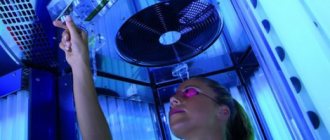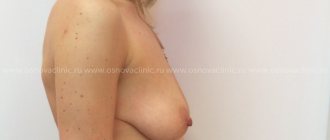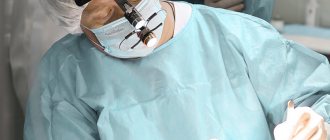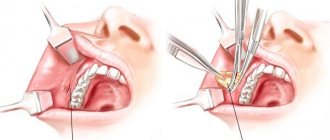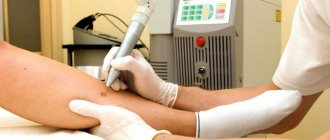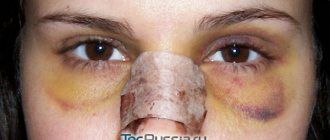Surgery can enlarge the breasts, correct physiological changes (such as sagging and loss of volume) and relieve psychological discomfort. the consequences of mammoplasty may be, depending on the characteristics of the body and improper behavior during rehabilitation. And mistakes by surgeons are not excluded.
Indications
There are a number of indications for mammoplasty.
The need to change the shape of the breast may depend not only on the individual wishes of the patient related to the aesthetic side.
Medical
In this case, mammoplasty allows you to get rid of serious problems.
The list of medical indications for such surgical intervention includes:
- ptosis (breast sagging while maintaining its size);
- macromastia (breast enlargement while maintaining its elasticity, to gigantic sizes, causing discomfort or physiological changes);
- injuries in which one or both mammary glands or parts thereof are lost;
- mastectomy (removal of mammary glands due to the appearance of cancerous tumors, purulent inflammation or genetic predisposition to breast cancer);
- breast asymmetry;
- abnormal development of the mammary glands;
- gynecomastia (hypertrophied breasts in males);
- congenital breast malformations;
- replacement of implants.
Cosmetic
More often, women turn to surgeons for whom changing the shape of their breasts is not a vital need.
Since there is no universal standard for which breasts are considered too small or large, this determination is subjective for each woman.
Conventionally, cosmetic indications for mammoplasty include:
- the need to restore the shape or size of the breasts after pregnancy, breastfeeding or sudden weight loss;
- post-lactation involution of the mammary glands (the need to make the size of the mammary glands the same, since often after the lactation period one breast becomes larger than the other);
- micromastia (small breasts).
Calcification
This is a specific complication of breast surgery, which is associated with the individual characteristics of the body. The mammary gland becomes deformed and its aesthetic appearance is lost.
A deposit of calcium salts forms around the implant - calcification. During examination and palpation, the surgeon identifies foci of calcification and may suggest implant replacement or correction surgery.
There is no prevention for this complication.
These deposits may be mistaken for tumors on mammography.
Contraindications to mammoplasty
There are a number of contraindications for which mammoplasty is not recommended.
These include:
- the patient's age is less than 18 years, since he must have reached puberty;
- undiagnosed breast diseases;
- any neoplasms in the mammary glands, in the stage of incomplete treatment (removal of benign tumors, possibly simultaneously with mammoplasty);
- pregnancy, incomplete lactation or less than 6 months after the end of breastfeeding.
Need to remember:
- an increase in the size of the mammary glands cannot prevent changes in the breasts that occur with aging, pregnancy, or a sudden change in the patient’s weight;
- after removal of prostheses for various reasons, depressions and wrinkles form on the chest, which are permanent due to tissue defects.
Treatment options
Such a formation in the breast as a gray tumor can be treated using two methods, such as surgery and medication. Large lesions can be treated simultaneously in two ways.
The surgical method is accompanied by the presence of adequate drainage.
A drain is installed to remove serous fluid and can be left in place for two to three days. Based on the amount of substance released, a specialist can judge whether the drainage should be removed or not.
Drainage is a fairly popular method of treatment, in which the process of removing the discharged substance from places of accumulation occurs.
Special devices can be removed from the wound, but generally, specialists remove fluid through special punctures located around the wounds.
Postoperative prohibitions
Since mammoplasty is a surgical intervention, it is necessary to follow all the doctor’s recommendations in order to avoid complications
Contraindications after surgery:
- You can wash your breasts no earlier than the seventh day after surgery and under no circumstances use a washcloth;
- on the second day after the operation, the patient is sent home, where at first it is necessary to rest as much as possible and avoid straining the arms;
- physical activity on the arms can be given no earlier than one and a half months after the operation;
- You can return to driving no earlier than two weeks after surgery;
- After the operation, a special bandage is applied to the lower part of the chest, which cannot be removed independently. This must be done by medical personnel;
- After removing the bandage, the surface of the scar will be covered with a crust, which should not be removed in order to avoid damage to the suture. It will fall away on its own;
- You cannot take a bath for two weeks after mammoplasty;
for the first time after surgery, you should not sleep on your stomach;
- within a month after surgery, creams or ointments should not be applied to scars without a doctor’s prescription;
- Do not remove compression garments ahead of schedule.
Prohibitions during surgery
Contraindications for mammoplasty are the same as for other surgical interventions, but there are still differences, since in most cases, this operation is not mandatory.
Absolute contraindications for surgery include:
- allergies to medications used for anesthesia;
- diabetes mellitus in the stage of decompensation or compensation;
- diseases in which blood clotting is impaired or long-term use of aspirin-based anticoagulants;
- systemic connective tissue diseases such as scleroderma or systemic lupus erythematosus;
- different types of immunodeficiencies;
- mental illness;
- severe chronic diseases in a state of decompensation;
- malignant neoplasms in the stage of incomplete treatment;
- acute diseases or chronic illnesses in the acute stage, which can indirectly affect the operation.
Dangers
A very big mistake is the statement that seroma will resolve itself without additional treatment and prevention.
In most cases, this may be true, but there is always a risk of an increase in the volume of fluid, which on its own cannot disappear and resolve.
This leads to subsequent complications such as:
- Formation of a serous fistula . In this case, the serous substance independently seeps through the soft tissue. Most often these are the edges of the wound. Such leakage can last up to several weeks, which contributes to infection of the endoprosthesis, which entails a repeat operation;
- Development of capsular contracture. The accumulation of fluid accompanies inflammatory processes, which ultimately leads to an increase in excess tissue. In turn, such tissue promotes the development and formation of the capsule;
- Suppuration of the place where the implant is located. The serous substance is an ideal place for the accumulation and development of bacteria, which can lead to suppuration of the implantation pocket.
What to do
Despite the large list of contraindications, refusal to undergo plastic surgery to enlarge or change the shape of the breast can be observed in only 3% of cases.
In most patients, surgery can be performed if treatment of the underlying disease is completed or it is in remission for at least six months.
Carriers of hepatitis C or HIV can undergo breast augmentation surgery if the immune system allows it and liver function is restored.
In order to make a decision, the patient needs to see a doctor and undergo an examination. And only after that, after weighing all the factors, should you agree or refuse the operation.
Find out what causes a double bubble after mammoplasty.
What is contracture after mammoplasty? Click to find out.
Reduced efficiency of breast cancer diagnosis
Breast implants and silicone have not been proven to cause cancer. Patients who have had a gland removed due to cancer are fitted with endoprostheses.
Sometimes it happens that a patient came for mammoplasty and an oncological disease was detected.
Experienced surgeons sometimes combine operations: during mammoplasty, for example, fibroadenoma is removed. And the removed material is sent for further examination.
On this topic
- Mammoplasty
Is it possible to correct the shape of nipples using plastic surgery?
- Editorial board of Plasticology.ru
- July 8, 2020
Endoprostheses make mammography examinations more difficult, which reduces the effectiveness of diagnosing cancer.
To prevent implant rupture during palpation and examination, it is necessary to warn the doctor about its presence.
Prevention of complications
Complications can occur after any surgery, but are more common after breast augmentation with implants.
They are conventionally divided:
- early (immediately after the operation);
- for later (one or two months after surgery).
They can also occur long after surgery. Therefore, it is necessary to properly care for your breasts and pay attention to the slightest changes in breast shape or well-being.
Swelling occurs in everyone without exception and is associated with tissue injury during surgery.
They disappear within two weeks, and in order to avoid their long-term preservation it is necessary:
- wear compression garments for the entire period prescribed by your doctor;
- during the first month after surgery, avoid thermal procedures, namely visiting the beach, sauna or hot bath;
- limit physical activity until complete recovery after surgery.
Before the implant is firmly fixed in the tissues, it can migrate.
Photo: Compression garments
In order to avoid this you need to:
- use compression garments;
- limit physical activity;
- sleep on your side or back.
One of the serious complications after mammoplasty can be suppuration due to the entry of pathogenic microorganisms into the wound. In order to avoid an abscess, the doctor prescribes antibiotics in the postoperative period.
Scarring
Immediately after the operation, the surgeon applies a special plaster to the scar. It makes it possible to maintain body hygiene at first.
It is important to allow scars and cicatrices to heal quietly in the first months. Surgeons recommend:
- do not scratch the scar, but let it heal and form;
- smear the formed scar with a special silicone gel;
- stick on silicone strips, which allow the skin to breathe and do not allow water to pass through, and also visually make the scar invisible;
- do not visit swimming pools, postpone a trip to the sea;
- do not load the chest area, scars should not stretch.
On this topic
- Mammoplasty
Compression garments after mammoplasty
- Editorial board of Plasticology.ru
- October 17, 2020
After a few months, the incision line will not be visible at all. But if a woman’s visible part has an unaesthetic appearance and this bothers her, plastic surgery has ways to correct this:
- excision of a scar or scar;
- grinding.
There cannot be the same time period until complete recovery. Therefore, if the scar is red, you need to wait until it turns white. Otherwise, you can get a keloid.
FAQ
Can silicone breasts look like real ones?
Maybe for this it is necessary to choose anatomically correct implants, a good surgeon who can perform a high-quality operation and not enlarge the breasts to too large a size.
And then only the surgeon himself can distinguish such mammary glands by touch or by eye.
Is it possible to fly on a plane or go diving with silicone breasts?
High-quality implants have a lifetime guarantee, so after the end of the rehabilitation period, you don’t have to limit yourself in anything.
In the first two weeks after surgery, you should still refrain from sudden changes in pressure, since during this period the tissues are swollen and this can cause pain.
Is it possible to breastfeed after mammoplasty?
Can. But after pregnancy and lactation, the breasts may change their shape slightly.
Are there non-surgical methods for breast enlargement?
Yes, there are paramedical methods in which a special gel or injections of hyaluronic acid are injected into the breasts.
But, unfortunately, they are more dangerous than mammoplasty.
The gel often migrates, leading to deformation and inflammation. And after injections, the effect lasts no more than two years, although the procedure itself is much more expensive than surgical intervention.
Read when sutures are removed after blepharoplasty.
Is lower eyelid injection blepharoplasty dangerous? The answer is here.
What are the symptoms of seroma after mammoplasty? Details in the article.
Skin ripples or washboard effect
Skin ripples (aka ripping) are the result of tension in the skin around the implant. It appears in stripes, as if someone ran their fingers over the skin and this left depressed depressions.
Typically, skin ripples are not static. It may appear or disappear depending on changes in body position or movement. It can have varying degrees of severity. Waves can be noticeable on the skin without clothing, or they can only be felt.
The appearance of skin ripples can be affected by:
- the condition of the patient’s skin, its elasticity, a sufficient layer of subcutaneous fat;
- shape and size of the implant;
- technique of the operation.
Most often, the “washboard effect” manifests itself in thin women with a small volume of their own breast. The larger the size of the prosthesis, the more likely the appearance of “waves” will be, especially if the width of the prosthesis is greater than the width of your own breast.
The manifestation of skin ripples is enhanced by saline implants, which are specially overfilled in order to avoid splashing and rolling of liquid inside the prosthesis. Soft gel dentures will create less ripples.
Implants with a textured surface create more ripples than smooth ones because they are held in place more tightly by tissue.
The risk of developing “waves” is lower when the implant is installed partially or completely under the muscle.
To eliminate skin ripples, you can:
- add volume around the implant using feeders such as Macroline or Alloderm;
- carry out lipofilling of the breast around the implant;
- replacing a saline implant with a gel one;
- transplantation of an implant under the muscle, if previously it was located between the muscle and the mammary gland;
- replacing the implant with a smaller one.
In fact, not everyone agrees to repeat surgery, especially to replace the implant with a smaller one, since skin ripples in most cases do not become a serious cosmetic problem.
